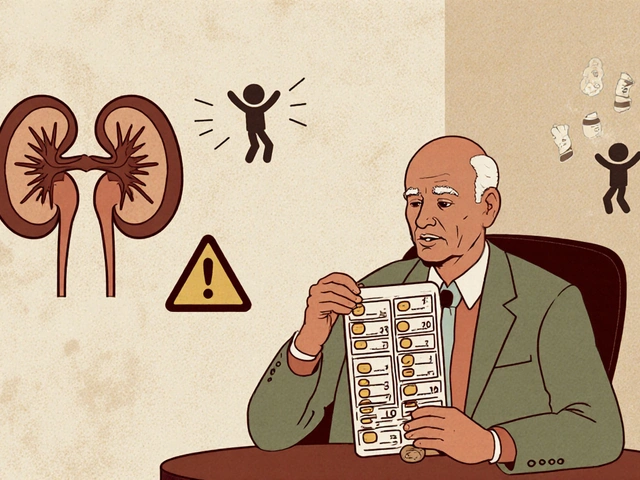Risperdal (risperidone): a simple, practical guide
Risperdal is the brand name for risperidone, a commonly used antipsychotic. People take it for schizophrenia, bipolar mania, and for severe irritability linked to autism. It can help reduce hallucinations, stabilize mood, and make daily life more manageable—but it also comes with side effects you should know about.
Common uses
Doctors usually prescribe Risperdal for three main reasons: to control symptoms of psychosis (like hearing voices), to treat manic episodes in bipolar disorder, and to help with severe aggression or irritability in autism. It works by changing brain chemicals, mainly dopamine and serotonin, to bring symptoms down.
Practical tips & safety
Here are clear, useful points to keep in mind if you or someone you care for starts Risperdal:
- Dosing: treatment usually starts low and increases slowly. Follow your prescriber's schedule. There are tablets, orally disintegrating tablets, liquid, and a long-acting injection (Risperdal Consta).
- Side effects you might see: drowsiness, weight gain, increased appetite, restlessness or slow movements (extrapyramidal symptoms), and raised prolactin which can affect sexual function or menstrual cycles.
- Watch for serious signs: sudden fever, stiff muscles, very fast heartbeat, severe confusion, trouble breathing, or uncontrollable face/tongue movements. Those need immediate medical care.
- Monitoring: expect your doctor to check weight, blood sugar, and cholesterol, and to ask about movement symptoms. Regular check-ups help catch problems early.
- Interactions and alcohol: avoid mixing Risperdal with heavy alcohol use or other sedatives—this can increase drowsiness and risk. Tell your doctor about other meds, especially blood pressure drugs, Parkinson’s meds, or medicines that affect heart rhythm (QT prolongation).
- Pregnancy and breastfeeding: risperidone may carry risks in pregnancy and can pass into breast milk. If you’re pregnant, planning pregnancy, or breastfeeding, talk this through with your prescriber so you can weigh benefits and risks together.
- How to take it: take tablets with or without food. If it makes you sleepy, taking it at night often helps. Don’t stop suddenly—withdrawal or symptom return can happen. If you want to stop, work with your doctor on a taper plan.
Wondering about alternatives? Other antipsychotics like aripiprazole or olanzapine are options, each with their own side effect profiles. The best choice depends on symptoms, side effects, medical history, and personal priorities.
This page gives straightforward info, not medical advice. If you have specific questions, strange symptoms, or concerns about treatment, call your prescriber or pharmacist. A quick check-in can save a lot of trouble down the road.

Finding alternatives to Seroquel can be essential for those experiencing side effects or seeking different treatment avenues. This article explores eight alternatives, delving into their pros and cons to help readers make informed decisions. Learn about options like Abilify and Risperdal, each offering unique benefits depending on individual health needs. Discover how these medications compare in terms of effectiveness and potential drawbacks. This guide aims to equip you with the insights you need for your mental health journey.
Continue Reading





